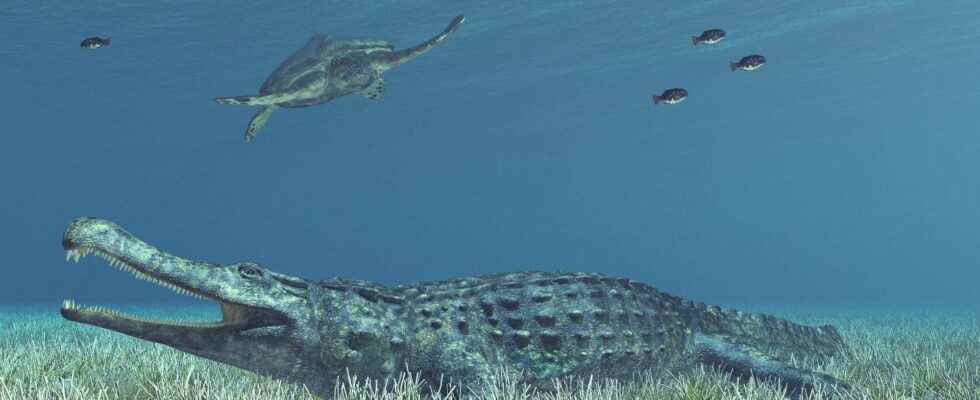You will also be interested
[EN VIDÉO] Crocodile, alligator and caiman: what’s the difference? We often confuse crocodile, alligator and caiman. They all belong to the order of crocodilians, but to different families. How to differentiate them?
The crocodilians are super-predators diverse in matter of ecologies and morphologies. facets of the lifestyle of species current can be estimated with behavioral observations, especially with regard to the trophic ecology of the species. In order to know the diet of crocodyliformes which preceded the current species, this type of observation is obviously impossible. These now extinct crocodyliforms include, for example, the Protosuchia and the Mesoeucrocodylia.
These now extinct crocodyliforms include for example Protosuchia and Mesoeucrocodylia
The last ancestors of crocodilians current ones have disappeared during the Trias (about 252 to 201 million years ago). The diet of these species is therefore most often inferred from bite marks and lost teeth in prey remains. The stomach contents of crocodyliforms fossils is indeed extremely rare and the discovery of such remains constitutes an exceptional discovery. A recent study published in the journal Gondwana Research recounts the discovery of a new species of Australian crocodyliform whose digestive contents are identifiable.
A dinosaur predator… but not only
The fossil described by the authors was discovered in Queensland and helps to define the species Confractosuchus sauroktonosranked among the Eusuchia. The name of the species is inspired by the Latin term conflicted which means “broken” and refers to the matrix in which the specimen was found. The term suchus refers to the name of Sobek, the Egyptian god with the head of a crocodile, that of sauros means “lizard” in Greek and the Greek term ktonos means “killer”, in connection with the digestive contents of the fossil crocodyliforme.
The latter consists of a skull almost complete, teeth, as well as a partially articulated postcranial skeleton which lacks hind limbs and tail. The fossil was dated 93 million years ago, during the Cenomanian (between 100.5 and 93.9 million years ago). The skull is 28.5 centimeters long and 19 centimeters wide. The microtomography images at X-rays reveal that the last meal of C. sauroktonos consisted of a young dinosaur ornithopod.
The remains of this last individual show bone fractures and a dismembered carcass, and consist of vertebrae, femurs and a tibia. The weight of the prey was estimated between 1 kg and 1.7 kg. The authors also indicate that according to the morphology of his skull, C. sauroktonos did not only feed on dinosaurs and that it should be able to tackle prey larger than itself. This data is all the more impressive since the authors estimated that the length of the specimen of C. sauroktonos was between 2 and 2.5 meters.
Interested in what you just read?
